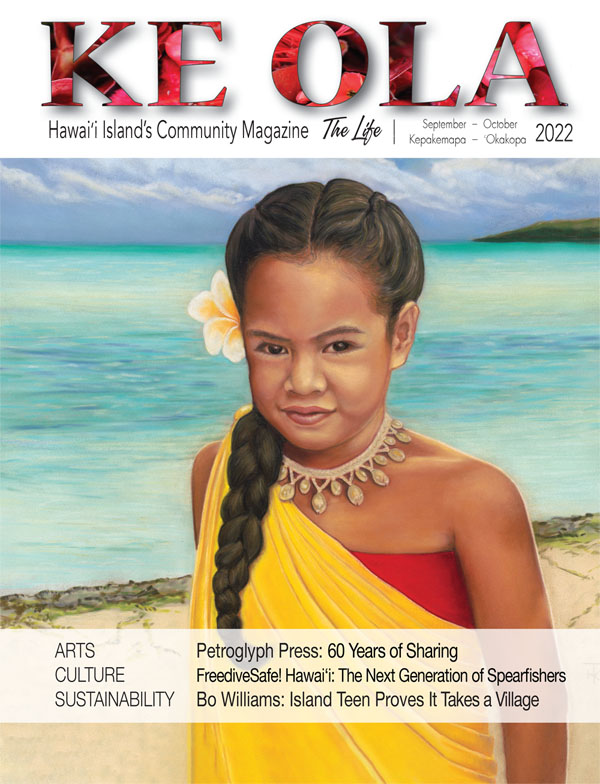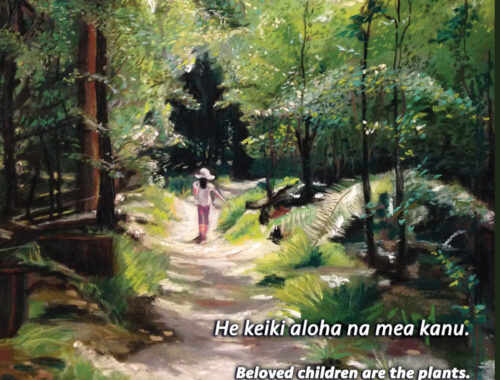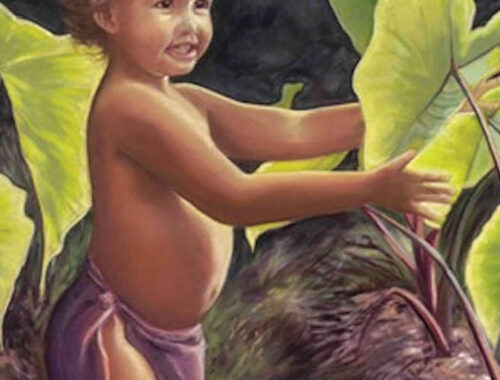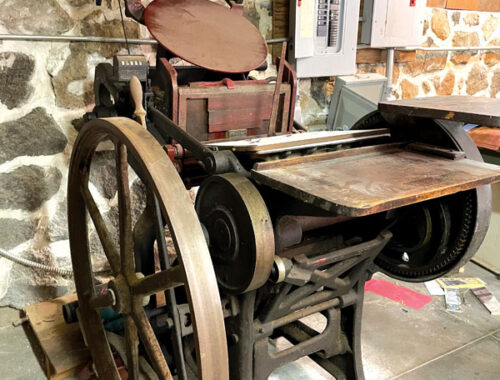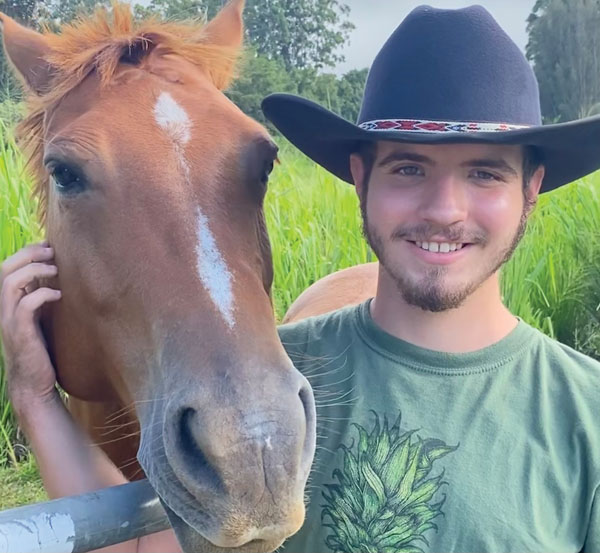
Bo Williams: Island Teen Proves “It Takes a Village”
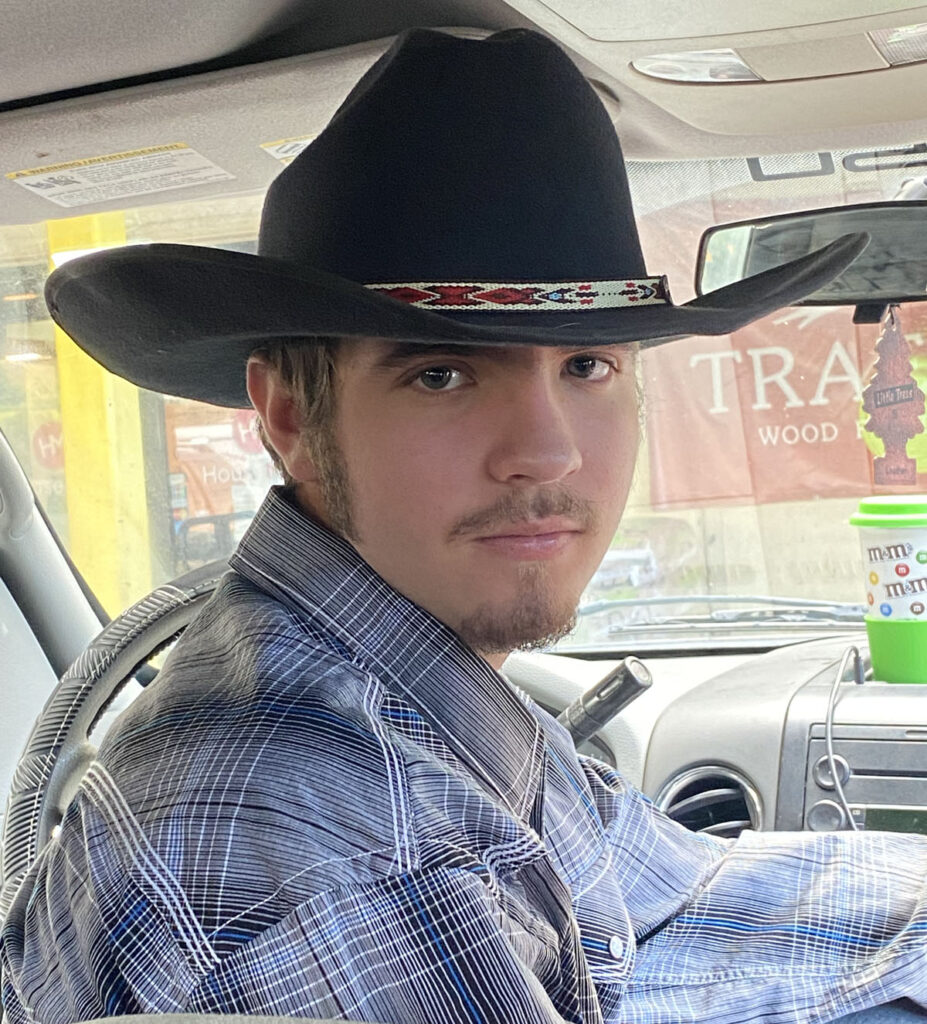
By Fern Gavelek
Restrictions brought on by the Covid-19 pandemic presented island youth with a variety of challenges: online school instruction, cancelled sporting events, and minimal, in-person interaction with friends. With the help of his community, a Hawai‘i Island teen overcame feelings of isolation while pushing himself to explore new interests and learn about himself.
Meet Bo Williams of Waikoloa Village, a Kealakehe High School (KHS) junior who is considering a career in farming and food manufacturing. Along with his family, the 16-year-old is starting a new business to grow and process Hawaiian chili peppers to create value-added products.
The saying “it takes a village” rings true in Bo’s journey to find his passions. His parents, mom Lynn and stepdad Rob Rostau, credit multiple connections and opportunities offered by community members, associations, and educators as key for helping Bo develop a love for agriculture, ranching, and an appreciation for hard work.
“This is a lifestyle that has stuck with Bo and we keep trying to feed it,” says Lynn. “It’s in his DNA somehow.”
How It All Began
Bo’s journey of connecting to the land began pre-Covid, when he attended E Ola Mau I Ka Pono Waipi‘o Summer Camp as a 12-year-old in 2017. The focus of the 10-day Waipi‘o Valley immersion camp was to get keiki (children) in touch with the land, themselves, and Hawaiian culture and traditions. Attendees awoke before sunrise to chant and go directly into the lo‘i to plant or harvest kalo, prepare breakfast in shifts, and then ho‘olauna (friendly introduction about themselves to others in Hawaiian). The campers also met the valley’s residents and helped them with farm chores.
While the experience provided the kids with guidance, camp volunteer Kawika Ayau says each attendee had to take on the responsibility of showing up and doing what needed to be done.
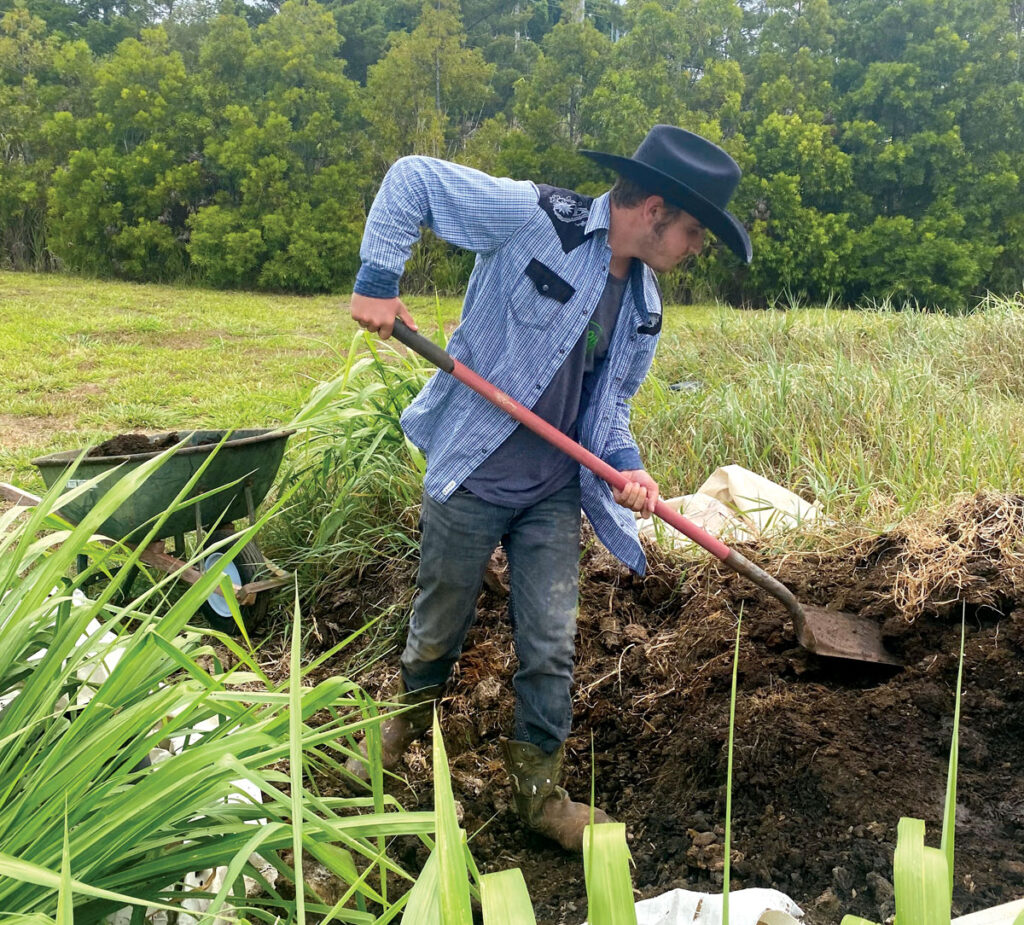
“After our work days, I noticed Bo was homesick; he was somewhat shying away from others and cried when practicing his ho‘olauna stories to share,” recalls Kawika. “He confided he missed his family. I assured him when his family comes down to hear his stories and about the week he had at camp, they would be blown away. Then you could see him smiling and soon he was wrestling in the mud with others, getting more involved, and creating new friendships.”
Kawika credits “the magic of Waipi‘o Valley, being in nature, and not being able to call mom and dad on a whim” as helping Bo break out and find his passion for the land.
Lynn confides how Bo was like “a different person” after camp. “It was like he had gone through a rite of passage,” she says. “He matured so much in that short time and came home with a new appreciation for things.” At home, Bo kept up the morning chanting and started planting in the backyard. “I feel this was a really formative experience for him,” she adds. Bo returned to camp the next summer, too.
Ranching Fills a Void When Pandemic Hits
When Covid-19 closed down things in 2020, Bo was a high school freshman with a lot of extra time on his hands. “I was attending classes online and didn’t know what to do with my time,” he shares. He became sad and lonely.
For younger sister Brooke’s birthday, the family went horseback riding in Waimea at Dahana Ranch. “I liked it there on the range with the animals and volunteered to come help on the weekends,” details Bo. He pitched in doing ranch chores like shoveling manure and painting. At the end of the day he’d get on a horse and help bring in the cattle.
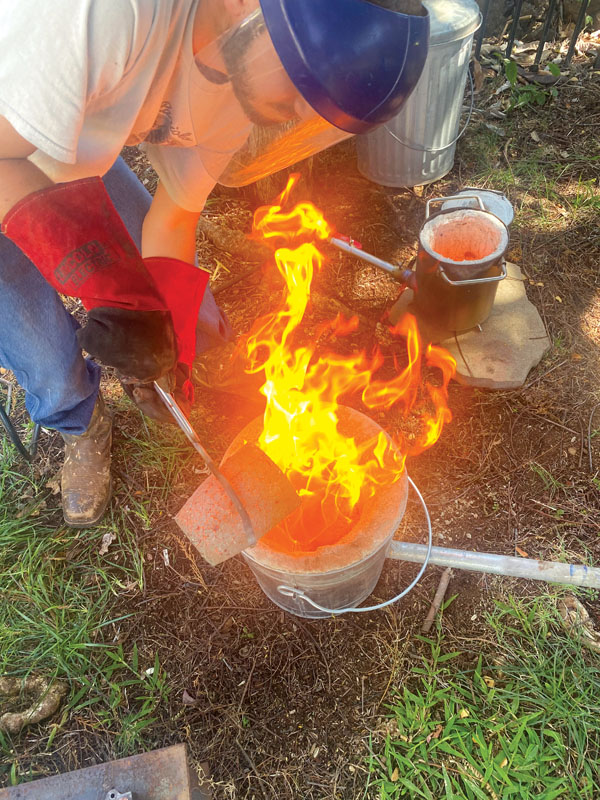
“We were motivated to help Bo pursue his interests and keep busy,” notes Lynn, who helped transport him to the ranch on weekends.
Next, the youth started volunteering at an off-grid, 20-acre ranch in Hawi. Owner Patrice Strange remembers meeting Bo when he came to the ranch with his family to adopt a puppy.
“Bo was dressed in cowboy attire and seemed to like the environment,” she recalls. “We invited him back to ride the horses and he came ready to work!” Bo helped string fence and clear pasture. Patrice adds Bo was very gentle and kind with the horses and they liked him. “He brings a sense of honesty and integrity to whatever he does; he doesn’t complain and is ready to help.”
While volunteering, Bo also learned about forging, the melting of metals to make objects. Patrice’s son Ridge showed Bo the craft. The boys made clasps for the ranch gates and Bo created jewelry, knives, and key chains.
Time to Dig in the Dirt
Around the same time, Bo’s stepdad, Rob, a chiropractor, learned about the Hāmākua Agricultural Cooperative in the Pa‘auilo Agriculture Park, through a patient. An opportunity there involved volunteering with Donna Mitts, a farmer and garden educator. That’s when Bo was introduced to growing vegetables at Clear View Farm.
“It was hard, difficult work weeding and separating the asparagus crowns,” notes Bo, who enlisted the help of a friend, Henry Hoffman, to help tackle the job of cleaning up the overgrown beds. “There were five beds, each 3’ wide, and 20’ long. It took a half day every week for a month.”
In exchange for their work, Donna gave the boys space to grow veggies. Bo’s parents joined in and the first-time gardeners planted radishes, peanuts, daikon, white onion, broccoli, and spinach.
“We tried to grow corn with no luck,” details Bo. “The main thing I learned is that growing things isn’t that easy and we planted everything at once so we had way too many radishes.” While Lynn laughs, “We got creative in using radishes,” Bo adds that lesson taught him about planting in succession where veggies are seeded at intervals to maintain a consistent harvestable supply.
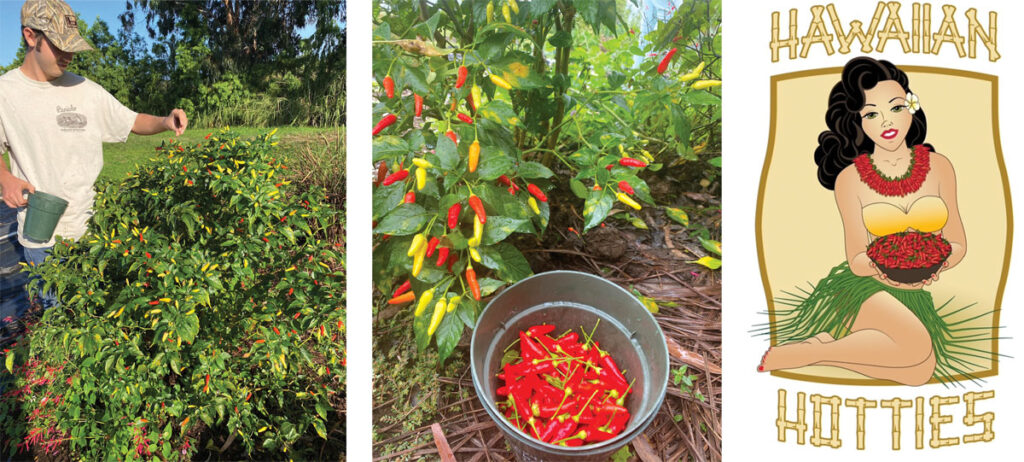
“We also quickly learned the value of using mulch to keep the weeds down,” continues the youth. “Donna taught us to first check the mulch for fire ants by using peanut butter as bait.” The group also experimented with fertilizers and what weeds to leave in the ground to provide the soil with nitrogen.
Lynn admits they were reluctant to start the garden project, figuring the high schooler would get tired and bored with the hard labor, but that wasn’t the case. The family shared veggies with family and friends, providing a social connection during Covid. Rob researched online how to pickle daikon and they tried that, too.
The family also started growing small and spicy Hawaiian chili peppers (Capsicum frutescens). Lynn posted a photo of one of the plants on Facebook and was contacted by a local hot sauce company to buy some peppers. That prospect got Bo excited so they are increasing their garden space to accommodate 116 pepper plants averaging 4.5’ tall.
In addition to wholesaling their pepper bounty, plans are in the works to start making a new spicy-sweet kettle popcorn and other value added products. The family has registered their brand name, Hawaiian Hotties. “We’re learning that Hawaiian chili peppers aren’t only good for making chili pepper water,” smiles Lynn.
Studying Ag at School

Because of his interest in growing things, Bo enrolled as a sophomore in the agriculture class at Kealakehe High. He learned how to repurpose pallets into planter boxes, process sugarcane into juice, all about hydroponics (growing plants in water instead of soil), and aquaponics (combines growing plants and fish in water). In addition, his class visited the 9,627-acre Kealakekua Mountain Reserve where a former ranch is part of a native forest restoration project in conjunction with essential oil manufacturer dōTERRA. The trip was funded and made possible by the Hawai‘i Agricultural Foundation.
“The goal of the field trip was to show ag is not only about planting food,” says KHS agriculture and natural resources instructor Manuel Jadulang. The students also helped move 57 trays of ‘a‘ali‘i, 50 trays of koa, and planted 21 trays of ‘āweoweo seedlings.
“We got to see the planted sandalwood trees and info on workers’ forestry jobs, learning what they do and how they record data while caring for the trees,” adds Bo.
Describing Bo as a “hands-on person,” Manuel invited the teen last June to attend a workshop with the Hawaii Island Landscaping Association where the student learned about small engine repair, sparking a desire “to work on farm equipment.” Manuel also mentored Bo on growing a tomato for the 2022 Hawai‘i County 4-H Giant Fruit & Vegetable Contest.
Looking back on his journey to connect with the land, Bo shares, “Through my experiences with ranching and agriculture, I learned that if I put in the determination and faith, I get much better results, and by being responsibile, I can stay on top of everything and not fall behind.”
Summing up how so many have helped Bo find his passions, Lynn emphasizes, “It’s fascinating how people were introduced into our lives to provide all these opportunities for Bo and us as a family. We couldn’t have taught him all these things that light him up. We are so grateful.” ❖
All photos courtesy of Lynn Rostau
For more information: hawaiianhotties.org
